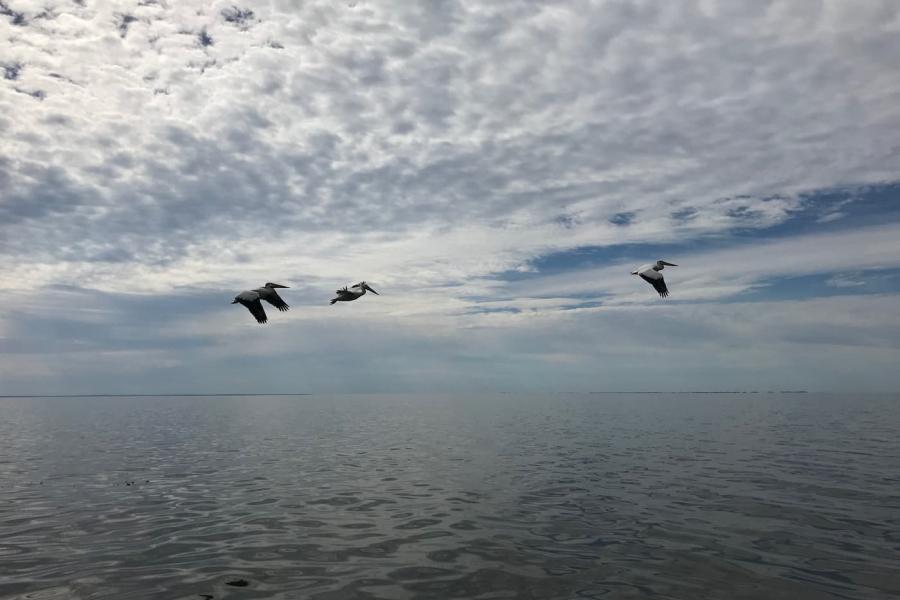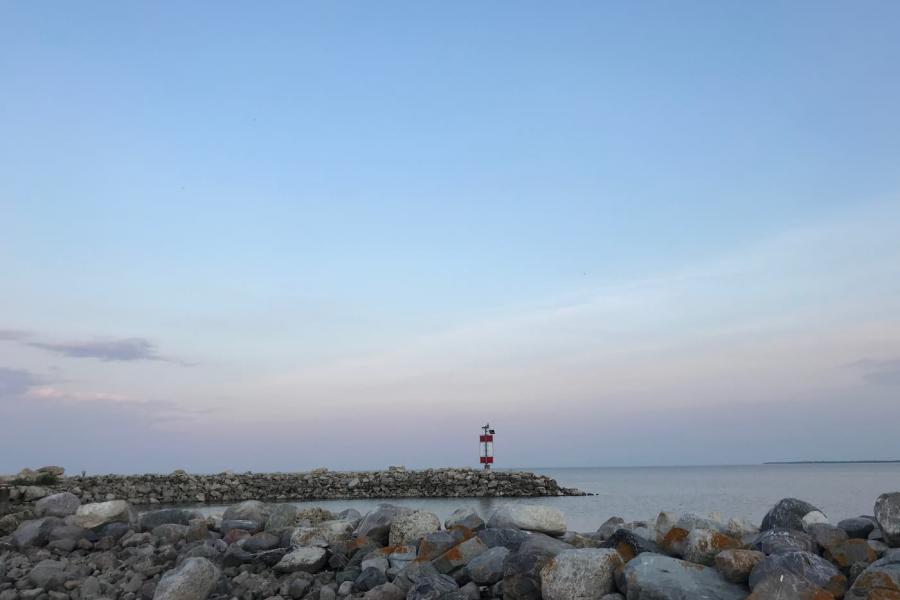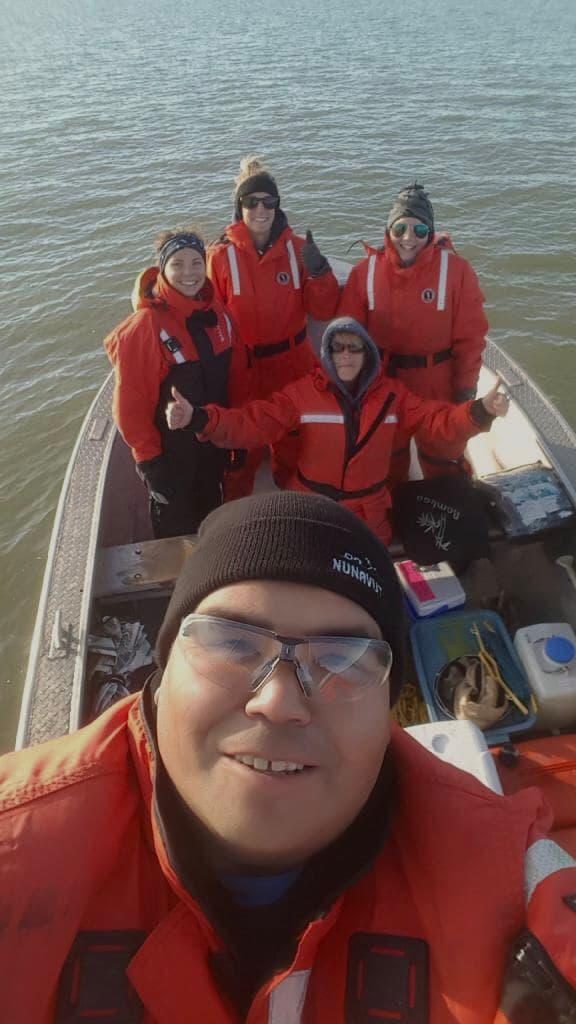Namao Spring Survey 2018: Sampling the Narrows and South Basin
- Manitoba Great Lakes Program
- Rachel Mandryk
My name is Rachel and I am a summer research student working for Dr. Tim Papakyriakou at the University of Manitoba. On June 19, I traveled to Hnausa to continue sampling for the spring survey.
Arriving bright and early, at 7 a.m. we took the “yawl” to launch from Gimli. The yawl (a.k.a. the workboat) is an aluminum craft, about 24 ft long with two outboard motors that we used for collecting samples. It is faster and more maneuverable than the Fylja. The photograph of the pelicans flying was taken this day, with beautiful, calm water making for easy sample collection. After collecting surface water samples and benthos at two stations in the south basin for processing back at the University of Manitoba, we returned to Gimli Harbour to pull the boat out, get petrol for the next day and head back to Hnausa for the night. Due to not being able to process samples in the field this time out, they were stored in the dark at 4 C until they could be picked up and taken back to Winnipeg.

June 20 was a much busier day. We started again at 7 a.m. and made our way to Matheson Island, a two-and-a-half hour drive which includes a short ferry ride and a long, dusty road. Once on Matheson Island, we launched the boat again and made a trip across the lake to Princess Harbour to set a zebra mussel trap for the province. We had the opportunity to have a conversation with one of the locals about how many zebra mussels had washed up onshore this past spring. After leaving Princess Harbour we resumed water sampling, doing two near-shore stations as well as doing bottom samples, benthos and phytoplankton trawls. Morgan, the field operations coordinator for the Lake Winnipeg Research Consortium, collected the benthos samples and phytoplankton trawls on behalf of another University of Manitoba researcher, Dr. Hann.
We were shocked when the bottom grabs pulled up large clumps of zebra mussels from the lake bottom, along with a little bit of gravel. We returned to Matheson Island, pulled out the workboat and drove back south to Pine Dock to launch for another near-shore station. Following completion of sampling for the day, we made it back to the Namao in time for dinner after delivering the samples from the day safely to their fridges. All of the days I was in the field, we were lucky to have warm, sunny days and calm water. It made for beautiful photos, especially in the evening while relaxing on the dock.

On the final day of sampling for the spring survey we launched from Gull Harbour on Hecla Island. Various sample types were taken, including near-shore, benthos grabs, phytoplankton trawls and whole water samples, with subsampling for algae. This was our shortest sampling day and after completing the stations set out for the day we returned to Hnausa and the Namao. I gathered up our equipment and placed the samples in a cooler to keep them cold until I could get them to the University for processing. The processing done at the University of Manitoba, where the water is filtered through filter papers for suspended carbon, nitrogen, and chlorophyll A. We use the filtered water then for dissolved organic carbon, and remaining unfiltered water for pH, conductivity and alkalinity. On the upcoming summer survey we will also be sampling for dissolved inorganic carbon (DIC), total alkalinity, 13C-DIC and methane in addition to the whole water samples, algal samples, pCO2 system, filtrations and incubations. For this survey, now that the Namao is out from dry dock, we’ll be covering the entire lake, sampling from the major inflows like the Red River, Saskatchewan River and Icelandic River, the South and North basins, the narrows and the outflows of the Nelson River.


